using a simplex search methods for the minimum mean of the seamgaps in the joints, which were controllled by one parameter. The parameter controlls the distance of the circle center from the midline of the piece
I would base my project on that data - the variation of the gap in the seam under momentum load on the two pieces. I would like to find the optimal offset of the circle center from the seam axis for the current configuration.
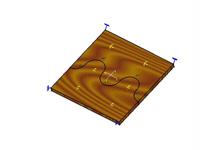
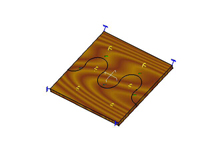
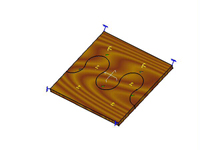
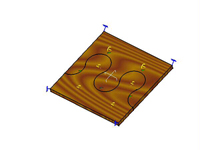
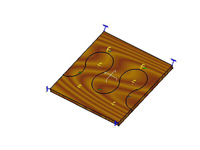
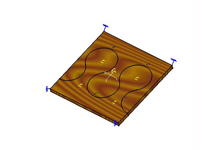
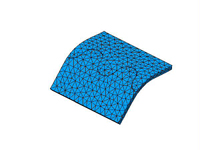
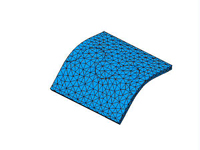
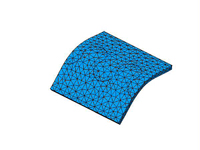
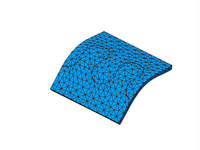
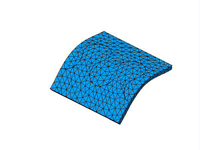
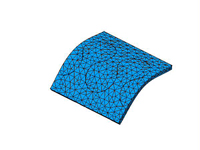
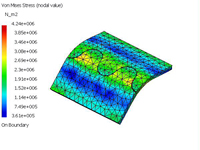
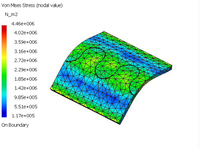
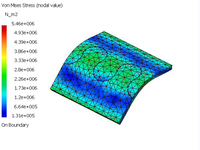
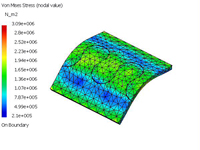

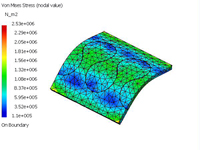
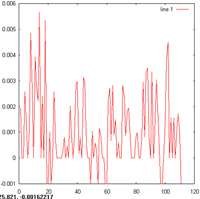
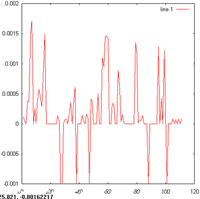
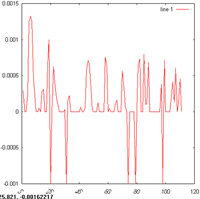
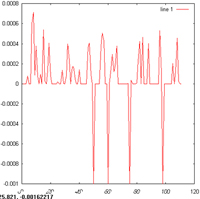
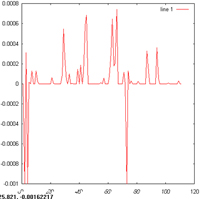
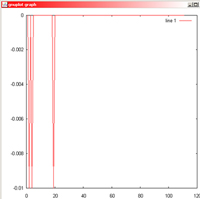
The -0.001 value is the pressure fit default gap width. Negative because it is a pressure fit joint that is prestressed through assembly. There is some features in this small data set already - one can guess the joint nodes and one side is showing more gap displacement then the other.
The plots
of the mean values of the gap curves as they were queried by the simplex
search method on the right.
The group on bottom are from a run that consistently produced the same
value due to an unresolved bug - but the remaining data clearly shows
a decrease in the gap size with higher center offset values.
Since the model does not take into consideration the difference in curvature
of the male and female pieces there is no penalty for growing th ejoint
larger which should be the case in the real joint.
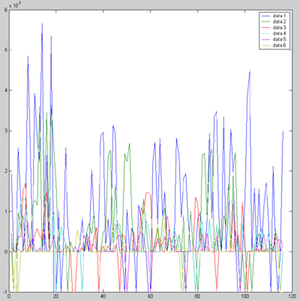
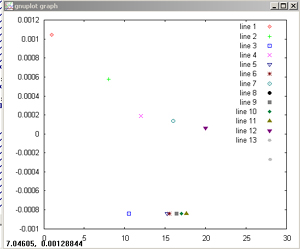
I used the
simplex search method on the function of the seamgap mean value out put
of the joint.
Each time I run the simplex it triggers a question for a particular value
from the CATIA finite element modeller. This value was generated through
a report that was passed on to Octave and returned the mean value of all
the distances. The search algorythm centered in around 17.625 mm for the
centeroffset of the circle. The search flattened out in the 16-17 mm region
for reasons I could not reslove in the time at hand.



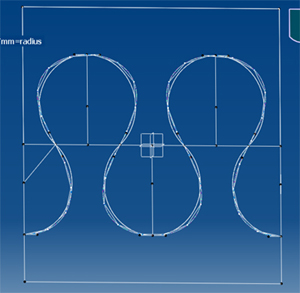
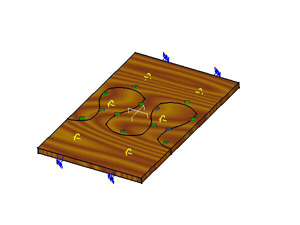
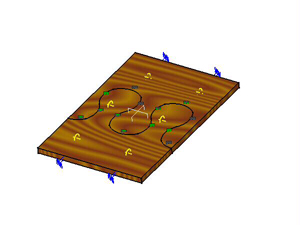
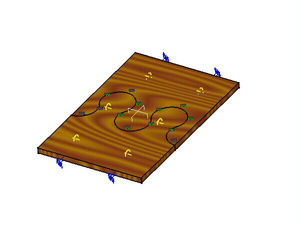
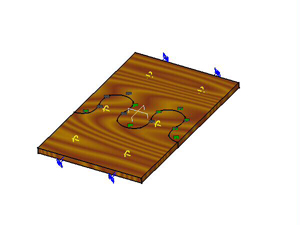

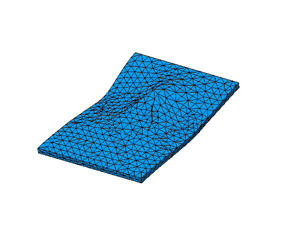
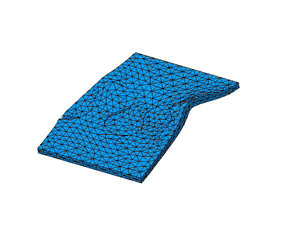
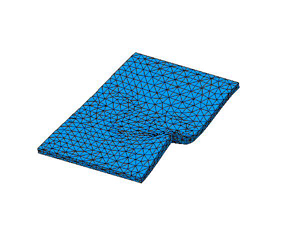
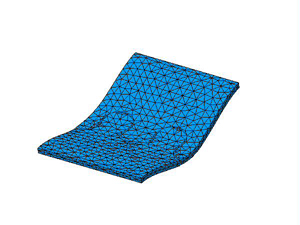
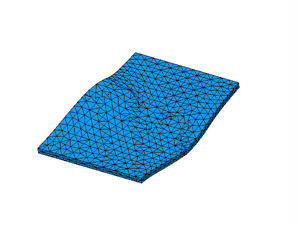
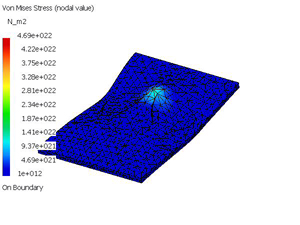
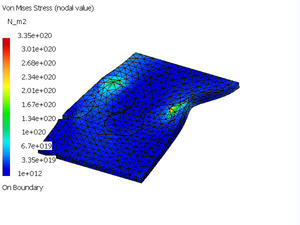
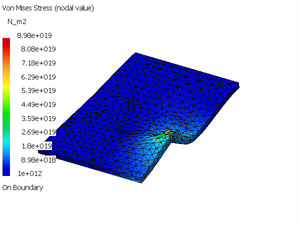
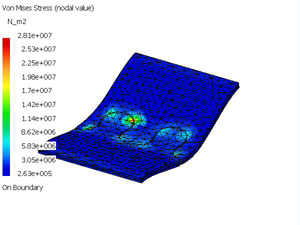

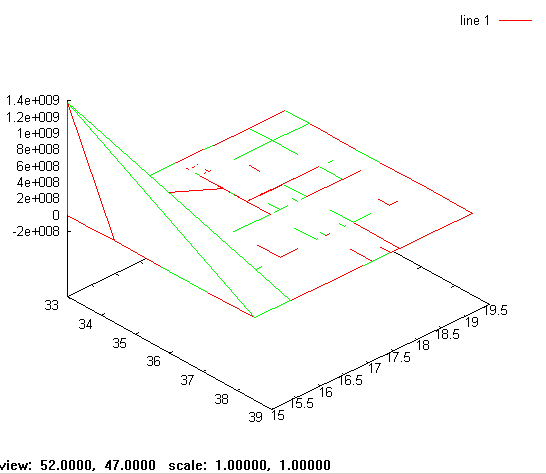
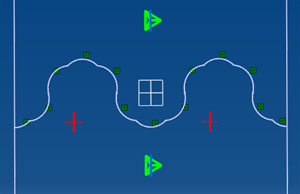
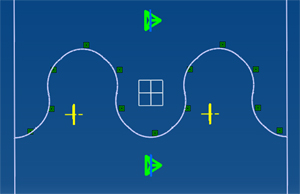
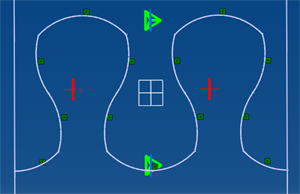
bash-2.05b$ appletviewer simplex.html
enter the value for offset value x: 38.5 y: 18.0
1.5885e+10
testloop 0 1.58849997E10 0
enter the value for offset value x: 33.0 y: 18.0
-8.4693e-04
testloop 0 -8.4693E-4 1
enter the value for offset value x: 38.5 y: 15.0
1.3738e+09
testloop 0 1.37379994E9 2
2 1 0
enter the value for offset value x: 33.0 y: 15.0
3.5739e+08
vals -8.4693E-4 1.37379994E9 3.57390016E8
enter the value for offset value x: 34.375 y: 15.75
0.00011328
test3
enter the value for offset value x: 37.125 y: 17.25
-4.6316e-04
test3
test4
test5
1 35.75
enter the value for offset value x: 35.75 y: 18.0
-4.2328e-04
testloop 0 -4.2328E-4 0
enter the value for offset value x: 33.0 y: 18.0
-8.4693e-04
testloop 0 -8.4693E-4 1
enter the value for offset value x: 35.75 y: 16.5
-2.9287e-04
testloop 2 -2.9287E-4 2
1 0 2
enter the value for offset value x: 33.0 y: 19.5
8.5464e+04
vals -4.2328E-4 -8.4693E-4 85464.0
enter the value for offset value x: 33.6875 y: 18.75
9.3565e+05
test3
enter the value for offset value x: 35.0625 y: 17.25
-6.6714e-04
test3
test4
test6
2 34.375
-8.4367e-04
testloop 0 -8.4367E-4 0
enter the value for offset value x: 33.0 y: 18.0
-8.4693e-04
testloop 0 -8.4693E-4 1
enter the value for offset value x: 34.375 y: 17.25
-9.2517e-04
testloop 0 -9.2517E-4 2
2 1 0
enter the value for offset value x: 33.0 y: 17.25
-5.3602e-04
vals -8.4693E-4 -9.2517E-4 -5.3602E-4
enter the value for offset value x: 33.34375 y: 17.4375
-8.3007e-04
test3
enter the value for offset value x: 34.03125 y: 17.8125
-0.0058654
test3
3 34.03125
enter the value for offset value x: 34.03125 y: 17.8125
-0.0058654
testloop 0 -0.0058654 0
enter the value for offset value x: 33.0 y: 18.0
-8.4693e-04
testloop 1 -8.4693E-4 1
enter the value for offset value x: 34.37
Conclusion:
Due to the lack of automation in the function value production through
CATIA it was not possible to get sufficently large values to make a prediction
of a minimum for the two dimensional data